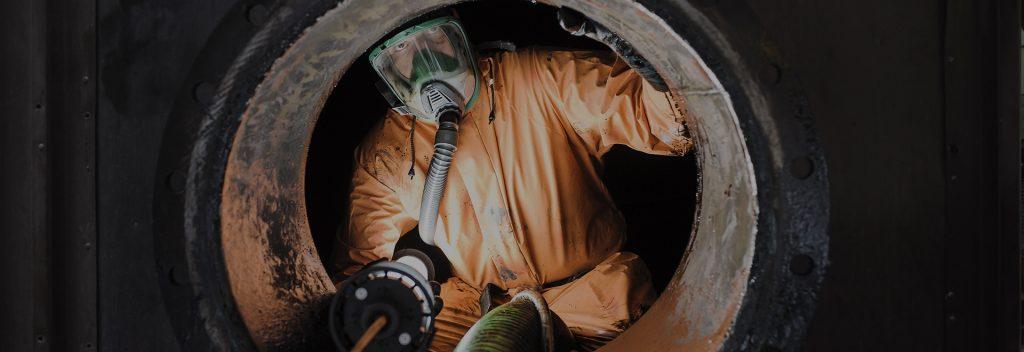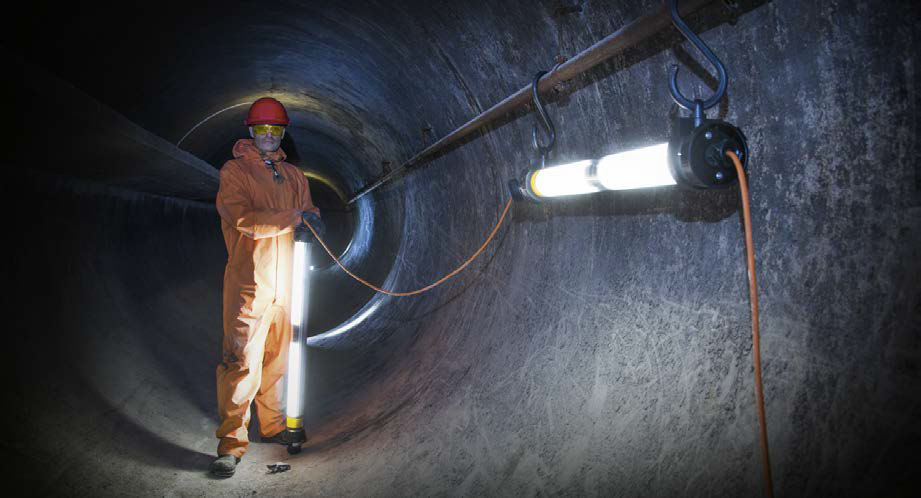Confined Spaces and Low Voltage Lighting
By Tuomas Seilo
Confined spaces are special no matter how you approach them. Simple things like moisture in the air or a metal bar alongside you can become life-threatening.

In this article, we look specifically at the risk of electrocution. I present what low voltage is and how it affects temporary lighting. If you feel something is missing, don’t hesitate to post your comments. Discussion and sharing views are always welcome!
Low voltage defined
According to the international standard IEC60364-4, anything below 50VAC (or 120VDC) is low voltage. At that level, you are unlikely to suffer injury if you are exposed to the current.
When I talk here about ‘low voltage,’ I am referring to what is technically classified as ‘extra-low voltage.’ The IEC60364 standard uses this term because it also addresses ‘high voltage’ (over 1000VAC) used, for example, in electricity transmission, and ‘low voltage’ which covers, for example, typical mains voltages in the 110-200VAC range.
But in everyday speak, we typically just use ‘low voltage’ when discussing 50VAC and below.
Low voltage in confined spaces
When you enter a confined space, your proximity to anything conductive becomes an immediate risk if there is electrical current in the area. Simply a torn cable with 110-240V (your typical mains supply) can result in electrocution and possible death.
One thing I should point out right up front: low voltage is not the same as explosion protection. Ex-certified equipment can be high or low voltage, and low voltage in itself is not inherently safe to use in Explosion Hazardous Areas.
While not all confined spaces are Ex Zones, they all have special requirements for electrical protection if there is any presence of conductive material, including water. Small vessels, columns, tanks, offshore platform separators, and the like need low voltage equipment. Whereas habitat spaces (pressurized tents on rigs), for example, typically do not present electrocution risks.
Low voltage in practice
Over the last several decades, however, you will find 24VAC as the most common requirement for LV equipment.
However, particularly for temporary lighting, we frequently use 48VAC. With this higher voltage, you remain safe from electrocution, but gain a lot more flexibility in your setup. You can extend your lighting arrangement by linking luminaires in a chain, for example, much further with 48VAC compared to 24VAC.
In some markets, the LV requirements are much stiffer than the international standards. Belgium, Russia, and some parts of the United States require 12VAC for portable lighting in confined spaces.
In Belgium, for instance, confined spaces have two classifications based on the presence of heat and moisture. If the confined space is dry and cool (cool enough that workers won’t sweat), 24VAC lighting is allowing. If the confined space has humid air and/or is hot, 12VAC lighting is required.
However, with lower voltage comes lower efficiency. You can’t link luminaires and cables cannot be more than 66 meters long. So, 12VAC presents a different range of challenges than normal LV setups.

Take nothing for granted
Whether it’s 12, 24 or 48VAC, LV equipment has become fairly standard in most parts of the world. Nonetheless, I have seen rather shocking practices, if you pardon the pun.
While on a site visit, I noticed our Atexor Ex-certified transformer was inside the confined space. The transformer is part of the temporary lighting solution to be able to provide LV supply current to LV luminaires.
In other words, the transformer itself is not low voltage. One side of it is getting the full mains juice. Having it inside a confined space that requires LV lighting was a major mistake.
So, whenever you are facing low-voltage requirements, it is important to think the whole thing through – equipment selection, placement, etc.
At Atexor, we pay special attention to electrical properties of our equipment. All exposed parts, for example, are either non-metallic or at least covered to eliminate the risk of sparks and electrical shocks. It is easy to take this sort of thing for granted, but you can still find temporary lighting with prominent, exposed metallic constructions.
If you would like to learn more about the advanced safety features of Atexor products and solutions for confined space, please visit our product pages or contact me directly. We have many seasoned professionals and an extensive range of high-quality, fully certified equipment, not to mention bespoke solutions, to help you solve your Explosion Hazardous Area lighting needs.
In case you feel you have more interest in this topic, perhaps it should be worth checking out these food for thought points as well:
Classes I, II and III are safety protection classes for electrical equipment defined by standards:
- Class I: 230V with earth wire in place,
- Class II: isolation by plastic enclosure
- Class III: low-voltage <50VAC (and 110VDC)
Class II equipment are mainly hand lamps with cables operating with 230V but without earth wire. Class III, i.e. low-voltage equipment, are in practice the safest choice in case of accident as there is no danger of electrocution.
Also keep in mind:
- Electrical configurations mainly include 2-pole (N+P) and 3-pole options (N+P+E)
- 3-pole option provides more flexibility, i.e. use of armored cables

